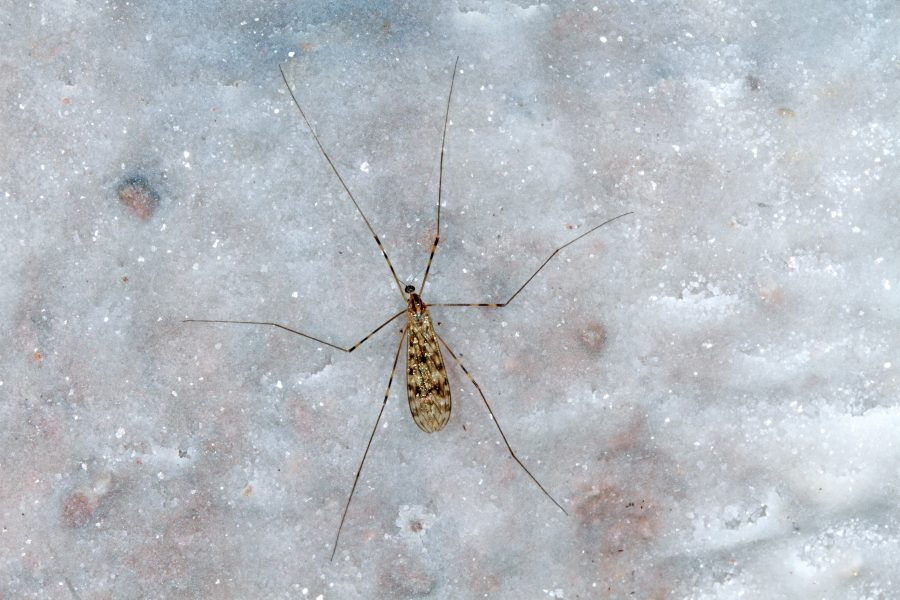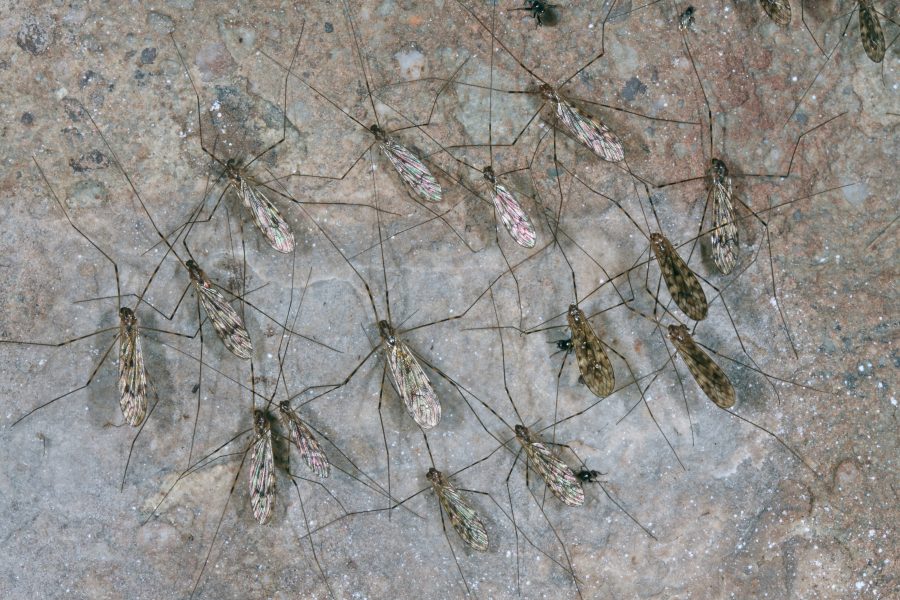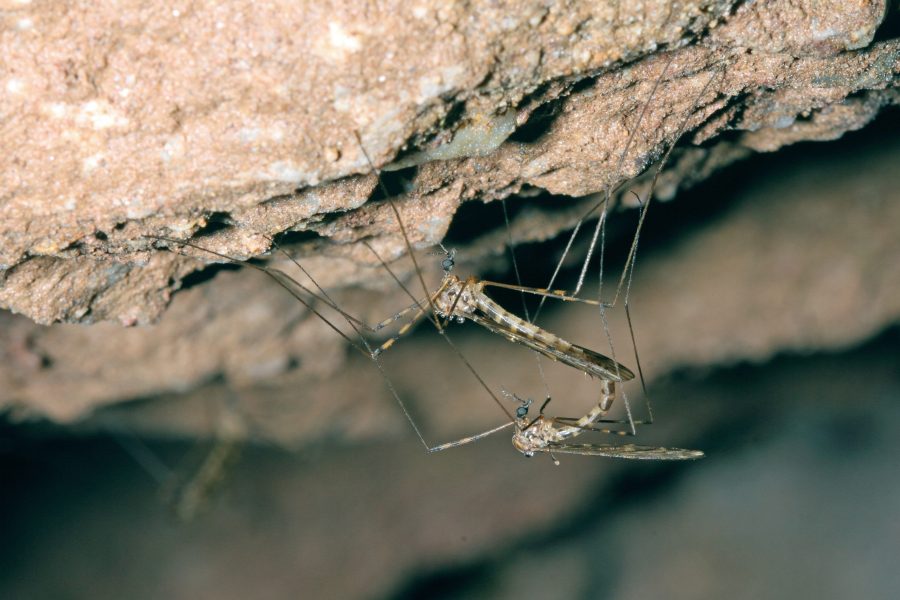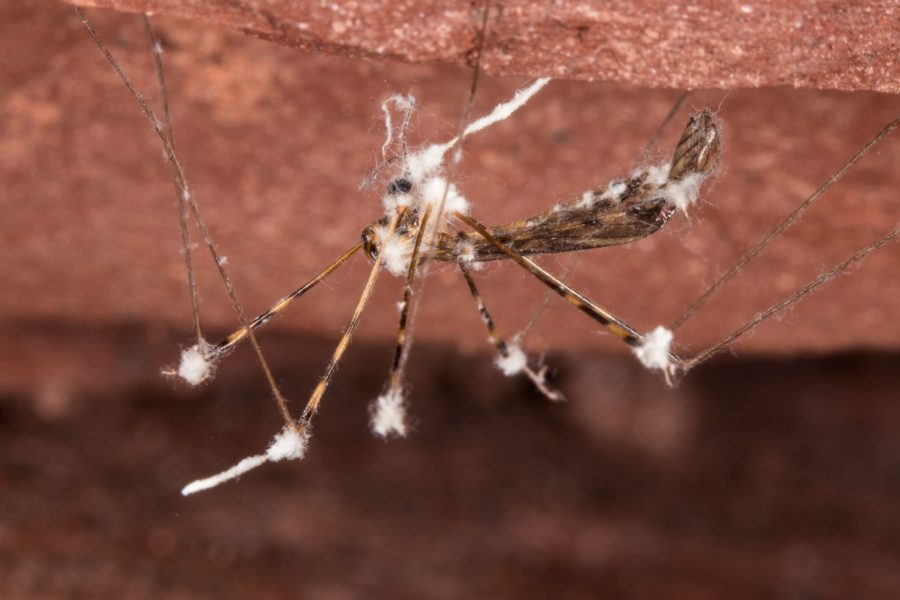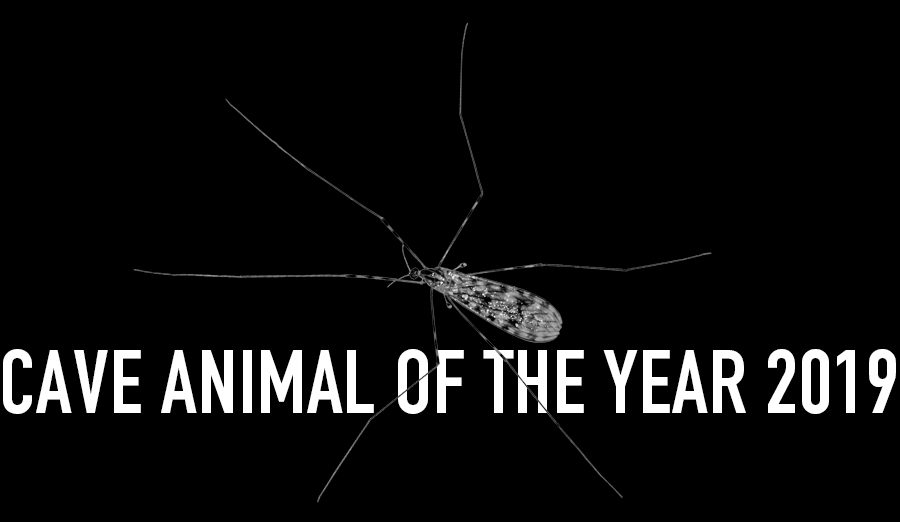
Common Cave Limoniid - Cave Animal of the Year 2019
Introduction
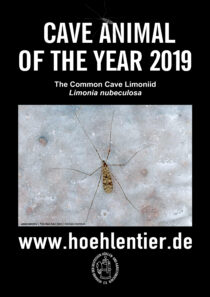
The Short-palped Cranefly or Common Cave Limoniid (Limonia nubeculosa) was first described in 1804 by the German entomologist Johann Wilhelm Meigen. The description is found in the scientific series "Klassifikazion und Beschreibung der europäischen Zweiflügligen Insekten" (Classification and Description of the European Two-winged Insects). The German name "Rheinschnake", which is often used by biospeleologists, is misleading, since the species is neither restricted to the area of the Rhine River, nor does it belong to the family Tipulidae ("Schnaken" in German). Meigen himself used the German name "Wolkige Wiesenmükke" ("Clouded Meadow-Midge or –Gnat").
During the summer half-year, these animals populate our caves and other subterranean cavities in great numbers. Because of their abundance in caves, but also because their ecological function as a link between surface and subterranean habitats, this Limoniid was chosen to be the Cave Animal of the Year 2019. The Common Cave Limoniid represents a large number of species, which are dependent on sheltered subterranean retreats.
With the designation of the Cave Animal of the Year, the Verband der deutschen Höhlen- und Karstforscher e.V. (German Speleological Society) hopes to raise awareness for the subterranean ecosystems and the animals found there, and point out the urgent need for research and conservation in this field.
Description
The Common Cave Limoniid is eight to 12 mm in size. It belongs to the family Limoniidae, commonly called "crane flies"; that common name also refers to members of the Tiplidae and some other smaller families as well. The animals are long legged, with a dark pattern on their wings, which are folded and overlapping when at rest. The otherwise yellowish shanks display three dark rings. The breast (thorax) is yellowish-brown with three dark lines along the back. The first segment of the antennae is yellowish; the second and third are brown. The wings show ash-grey splotches and in the middle of the leading edge there is a grey half-circle followed by two or three dark brown dots.
The Common Cave Limoniid inhabits predominantly damp forests from March to November. The adults are often found sitting on the tree trunks, while their larvae live in the mud of water bodies, occasionally in masses. The larvae are predators of microorganisms. From March to October, the Cave Limoniid is also regularly found in caves. During the rest of the year, nothing is known about them. In our latitude, this sub-troglophil species is the most typical of the animals which retreat into caves over the summer. Their numbers reach a maximum in the months of July and August, when the animals are found in several thousands. The Common Cave Limoniid penetrates quite deep into the dark zone of the caves, but doesn’t inhabit the complete cave. The animals prefer areas without drafts and niches. They are usually found sitting on vertical surfaces, sometimes covering the whole wall. Copulations are regularly observed in subterranean habitats, during which the partners form a wheel. However, the eggs are deposited outside of the caves near water bodies.
During the summer half-year, the Common Cave Limoniid is an important component of the food chain of a cave. Especially the cavernicole spiders Metellina merianae (the Lesser Cave Spider) and Meta menardi (the Greater Cave Spider) feed on these dipters. Some of the animals in a cave are commonly populated by orange-colored mites. For the last few years, increasing numbers of the Common Cave Limoniids infested by a fungus have been discovered, which kills the animals. Thus, even in winter, a large number of dead animals are found on the cave walls, which are covered by a white fungus mycelium. This phenomenon seems to spread in Germany from south to north; it is currently the subject of a scientific research project.
Distribution
The Common Cave Limoniid is found nationwide in Germany. In fact, the species occurs in all of Europe, and has been observed in all the European cave areas.
